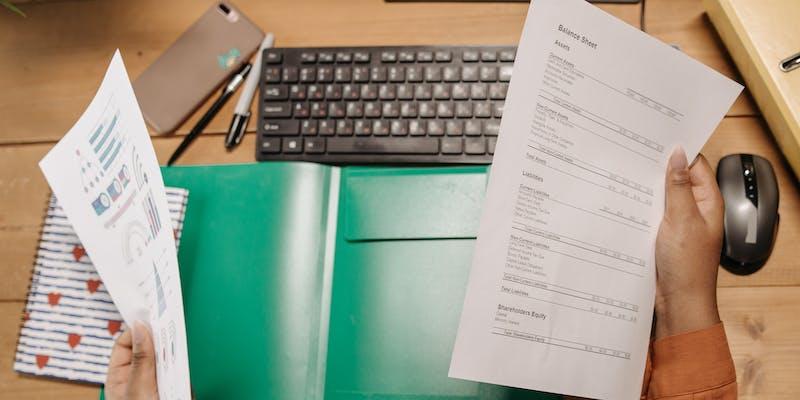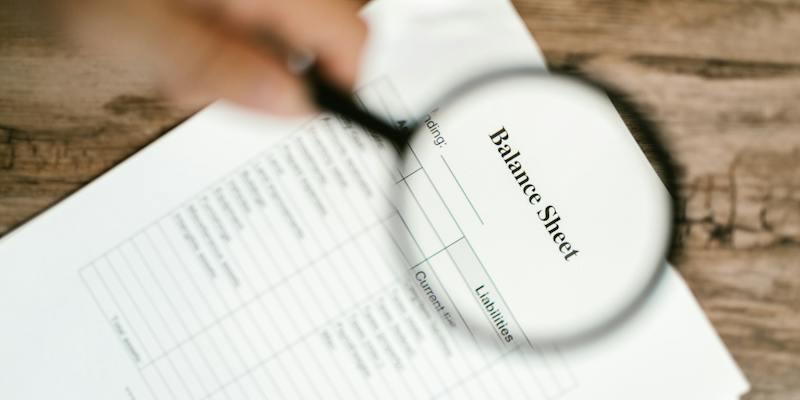Detailed Overview of the Balance Sheet: Components and Examples
Dec 30, 2023 By Triston Martin
The balance sheet must be the company's most fundamental accounting document. It shows the company's financial status at a certain date. They present a clearly defined description of the company's assets, liabilities, and shareholder's equity (what the shareholders get from it). Thus, a balance sheet is an extremely important tool for evaluating a company's financial situation when investing and planning its future business strategy.
Balance sheets have been likened to the photographs one can look at in a photographic album because they represent the condition of a company's finances at a particular moment. Yet they don't complement each other to show a gradual trend or changes in long-term development. Hence, the only way to gain an understanding of a company's overall course over time is to compare it with balance sheets from different periods.
Balance sheets ultimately get converted into things like the debt-to-equity ratio or the acid-test ratio, important tools investors and analysts use in financial analysis. They'll also look at things like income statements, cash flow statements, and the like, all to flesh out their financial analysis.
Balance sheet analysis follows a basic accounting equation:
Total assets = liabilities + shareholders' equity
This equation underpins financial accounting. It shows how debt (liabilities) or equity (shareholder equity) finance a company's assets. A company that borrows $4,000 increases its assets and liabilities, maintaining balance. Equity and assets increase when a company raises $8,000 from shareholders. Any profit over expenses boosts shareholder equity, reflected in cash or inventory.
Components of the Balance Sheet

Assets
Assets are valuable things a company owns or controls. These can be tangible, like buildings or products in stock, or intangible, like money, goodwill, or leased use.
What gives an asset its value? It has the potential to bring in future benefits. This could be through using the asset, selling it, or collecting on it, which brings money into the company. Or, it might be through using the investment to prevent money from leaving the company.
Take prepaid insurance as an example. It's valuable because it saves the company from spending money to replace or fix assets damaged by unforeseen events. Ownership is key when defining an asset. The company must have exclusive control over it. For instance, a company-owned fire station on its premises is an asset. However, a public fire station, even if it serves the company, isn't an asset to that company. The distinction is in the company's unique control over its resources.
Liabilities
Liabilities are what a company owes, essentially the debts it must pay back. They are not tied to any specific asset but are a general claim against the company's value. A liability can be seen as a promise to give up some future benefit, usually money. Sometimes, an agreement might include a collateral arrangement, like a mortgage, where certain assets are pledged as security for the debt. Still, the debt is a claim against the company, not the asset.
In practice, the distinction between debts (liabilities) and investments (owner's equity) can blur, especially when a major shareholder also lends money to the company. The treatment of such cases depends on individual circumstances and legal judgments. Liabilities are typically settled in cash, but sometimes, they might be resolved by transferring other assets or providing services. In some instances, liabilities might transform into ownership claims, depending on the company's situation.
Owner's Equity
The other main category of claims against a company is owners' equity. This differs from liabilities in several ways. There's usually no fixed date by which these claims have to be settled. They're not as enforceable as liabilities and don't typically have a guaranteed rate of return. Owners' equity is often seen as a residual interest in a company's assets after deducting liabilities. It represents the ownership interest in the company, derived from contributions made by the owners and the company's earnings or losses over time.
From an accounting perspective, whether you view owners' equity as a residual interest or as the total of owners' contributions and subsequent changes, the result on the balance sheet remains the same. Owners' equity claims are against the company as a whole. While these claims can be satisfied by distributing company assets, they are often left unresolved or simply exist as internal accounting categories. Unlike liabilities, owners' equity can't be paid out directly; only assets can be distributed to satisfy these claims.
Importance of a Balance Sheet

Every business, big or small, in any sector gains from thoroughly inspecting its balance sheet. It's a crucial tool in business management and decision-making.
- Firstly, balance sheets are key in evaluating risk. They detail a company's assets and liabilities. By studying it, a company can quickly gauge if it's over-reliant on loans, if its assets are too difficult to convert into cash, or if it has enough funds to cover immediate expenses.
- Balance sheets also come into play in the field of funding. Lenders and investors sometimes request the balance sheet to judge a business's financial condition and willingness to repay short-term loans. This helps them determine a company's creditworthiness, which is key to loans and private equity.
- The financial ratios in balance sheets are like financial managers examining corporate performance. The ratios indicate the company's liquidity, profitability, and ability to repay long-term debts. Managers can utilize these ratios chronologically and with competitors to evaluate prospects for financial enhancement.
- Lastly, balance sheets can be a magnet for top talent. Employees prefer the security of a financially stable employer. Public companies disclose their balance sheets, allowing employees to assess their cash reserves, debt management, and overall financial stability. This transparency helps employees feel more secure about their jobs and the company's future.
Limits of A Balance Sheet
A balance sheet offers a concise overview of a company's financial status at a specific time, but its fixed nature may not always provide a comprehensive narrative. It resembles capturing an image of a runner amid a race, providing a snapshot of their current position without revealing their speed or the distance they have covered. Furthermore, different accounting methods can affect how items like depreciation and inventory are reported. This flexibility allows creativity in presenting a company's financial position. A savvy reader should always check the footnotes of a balance sheet to get insights into the accounting choices made and any potential warning signs.

Susan Kelly Feb 07, 2024
All You Need to Understand: How Peloton Makes Money
80917

Triston Martin Feb 06, 2024
Want To Boost Your Profit? Explore These Best Short-Term Investments
17471

Triston Martin Dec 24, 2023
Everything About SEC Form 10-Q: Filing, Deadlines, and Key Components
59461

Susan Kelly Nov 24, 2023
Taking a Gap Year
81596

Triston Martin Feb 06, 2024
Choosing Between Personal and 401(k) Loans: Insights for Financial Planning
7614

Triston Martin Nov 16, 2023
Clearing Up Your ChexSystems Report
22255

Susan Kelly Feb 21, 2024
Analyzing Municipal Bonds: Is Investing in Munis the Right Choice?
63185

Triston Martin Jan 22, 2024
5 Essential Facts About the Cred.ai Credit Card: A Comprehensive Guide
41064